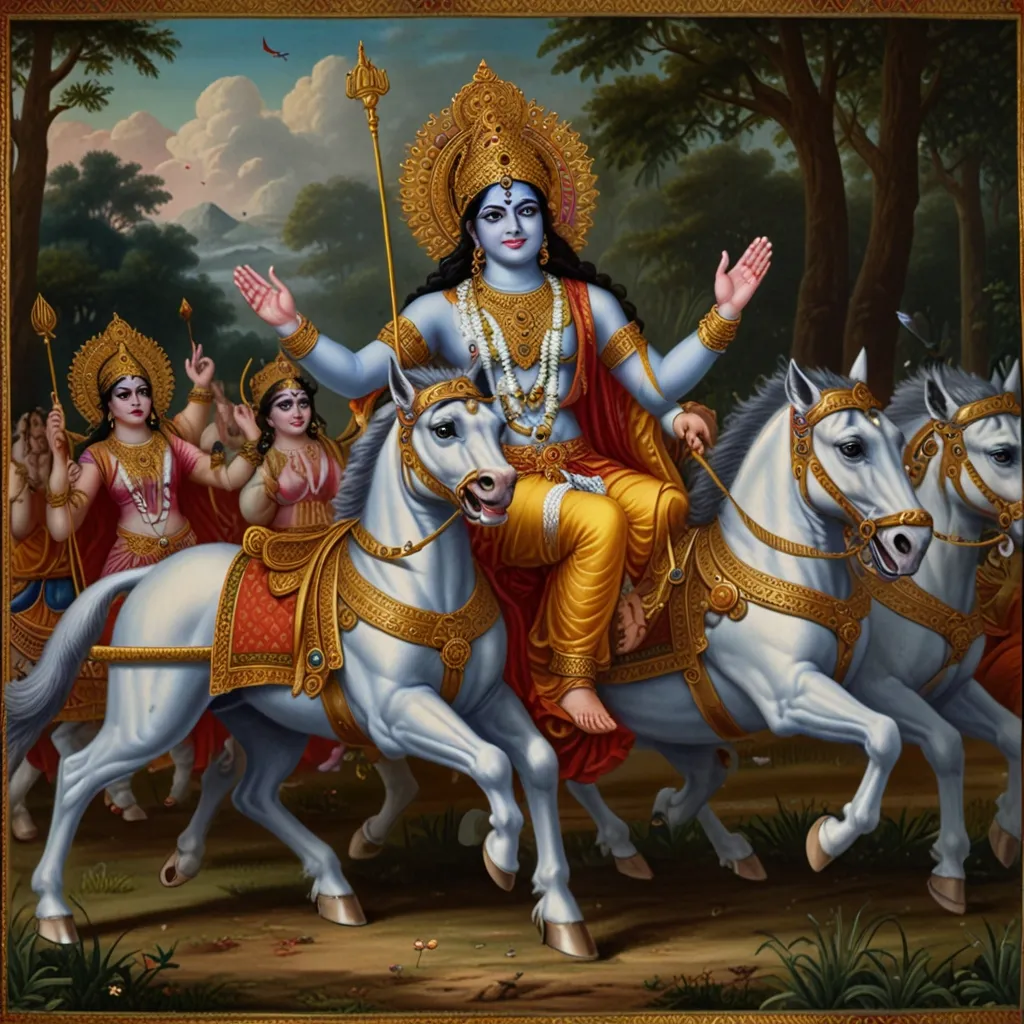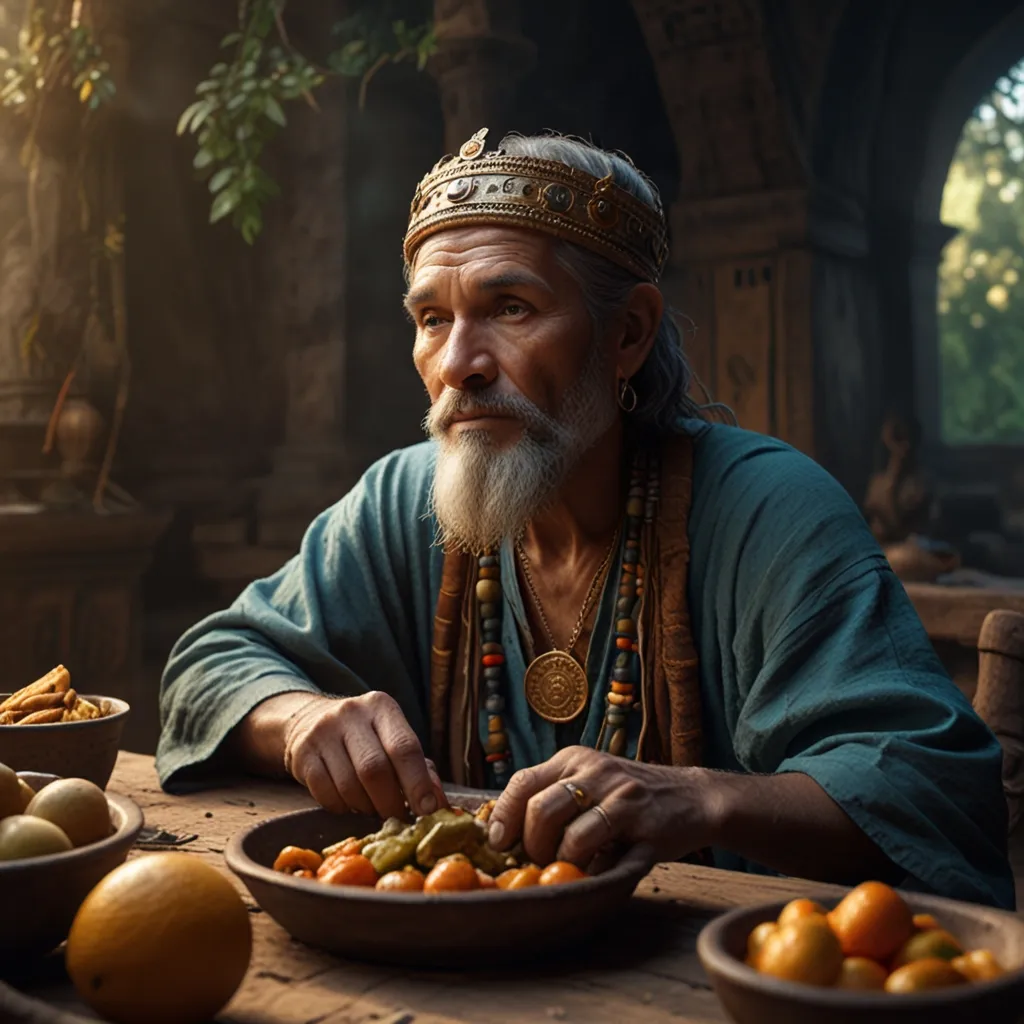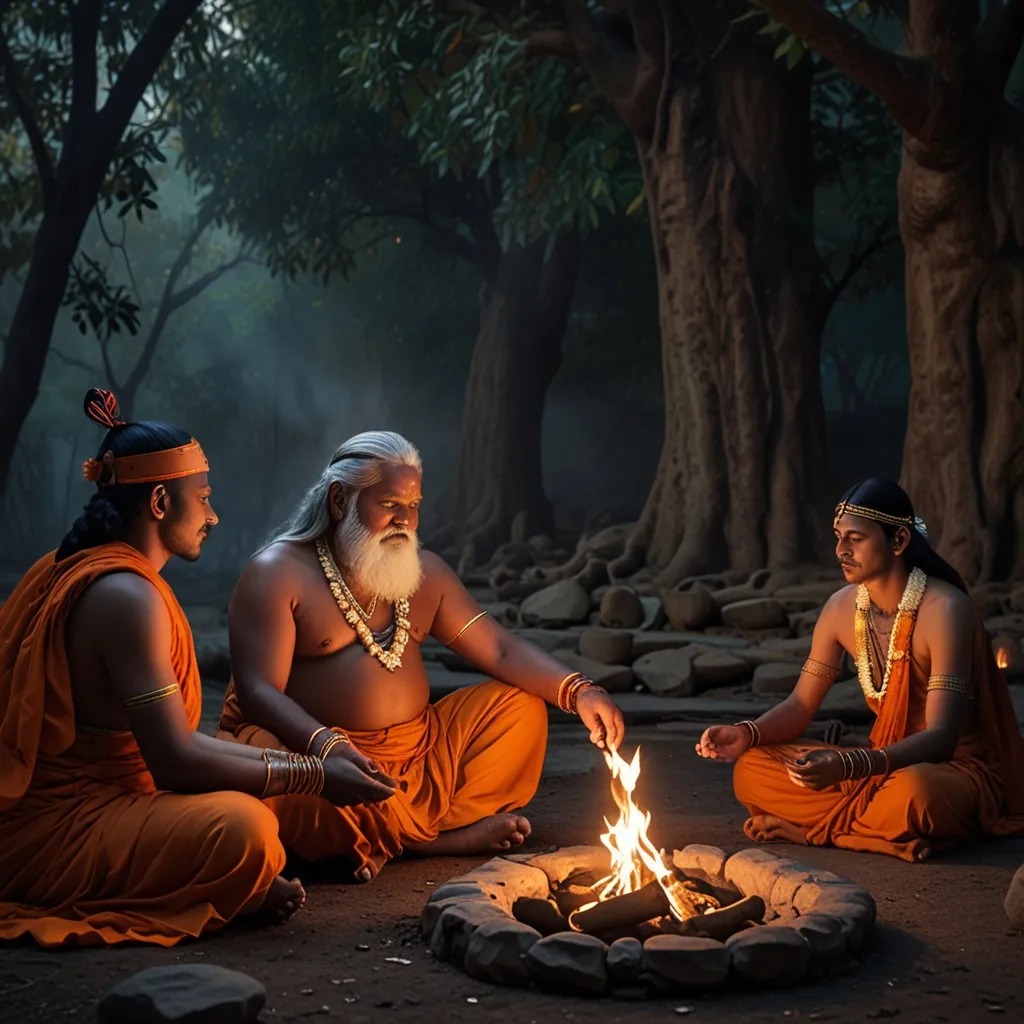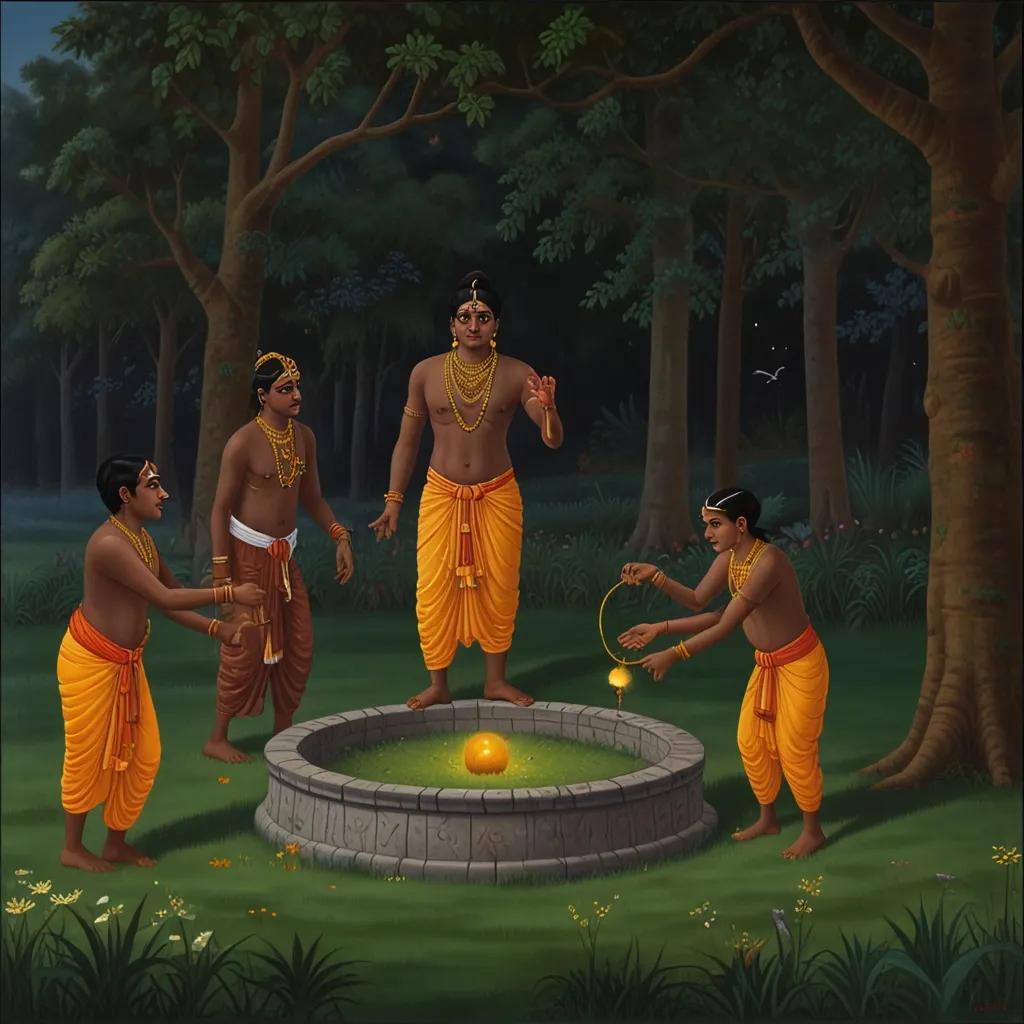Chyavana’s tale is one that glows with the shimmer of ancient wisdom, and like any good story, it’s got drama, love, and a sprinkle of divine magic. Picture it all set in a time where gods mingled with humans and miracles were almost a daily affair.
The story kicks off with his dramatic entrance into the world. Chyavana’s mom, Puloma, was this super devoted wife to Sage Bhrigu. Everything was cool until a demon named Pulom, who had a serious crush on her, decided to make a move by shapeshifting into a boar and kidnapping her. Talk about betrayal! Puloma, understandably freaked out, cried all the way until she was rescued and taken back to her home. Now here’s where it gets interesting: Chyavana, still in the womb, got so mad at the demon that he literally looked at him and boom! The demon turned to ashes. That’s how Chyavana earned his name, which loosely translates to “slip out” because, well, he was prematurely born during this whole fiasco.
Growing up, Chyavana didn’t just sit around. He turned into this intense meditation pro, devoting so much time that nature decided to make him part of the scenery. Covered by a crow’s nest, Chyavana stayed there meditatively until Sukanya, the curious daughter of King Sharyati, stumbled upon him. Unaware that the shiny objects were his eyes, Sukanya poked them like a curious child. Blinding Chyavana.
King Sharyati, in a bid to make up for his daughter’s mistake, offered Sukanya in marriage to Chyavana. Although Chyavana was blind and old, Sukanya’s devotion was unwavering. Her commitment was so impressive that the Ashwini Kumaras, the twin gods known for their medical prowess, decided to test it. They offered her a lavish deal – leave her aging husband for one of the twin gods and live in heaven. But Sukanya, proving those wedding vows were no joke, refused.
Touched by her loyalty, the Ashwini Kumaras decided to return the favor by restoring Chyavana’s youth and sight. They set up a little challenge where Sukanya had to pick out her husband from among three identical-looking men after they all took a magical dip in a pond. Thanks to her divine insight, she picked Chyavana without breaking a sweat.
With newfound youth and vision, Chyavana was filled with gratitude and promised the Ashwini Kumaras a share of future crucial sacrifices or yagnas. This was a massive deal because it meant the twins could now participate in these significant religious rituals, blending the sacred with the practical.
But Chyavana’s transformation went beyond the physical. It was like someone clicked the refresh button on his spirit. He turned into a symbol for the incredible potential the human body holds to rejuvenate and renew itself. His name, hinting at constant movement and change, mirrors the flow of life – childhood to old age, everything transforms.
Let’s chat about the Ashwini Kumaras for a sec. These twins weren’t just any gods. They were like the divine Red Bulls, embodying life forces or pranas. Always moving, they symbolized the continuous energy flow needed for vitality. Chyavana’s alliance with them was more of an agreement to harness these life energies, which in turn symbolized the foundation for a longer, healthier life. The essence here is yoga and breath control, key ingredients for maintaining youthfulness and vigor.
Diving deeper into Chyavana’s tale, you stumble upon Chyavanaprasham. This isn’t just some random herbal paste; it was concocted by the Ashwini Kumaras themselves to rejuvenate Chyavana. Fast forward centuries later, this paste is still used for its rejuvenating magic. It’s a blend that captures the essence of ancient wisdom, showing how the story of Sage Chyavana continues to have a tangible impact even today.
To wrap it up, Chyavana’s saga is not just some ancient legend but a powerful lesson in transformation, unwavering loyalty, and the blessings of the divine. It’s an ode to the magic that happens when devotion meets divine favor, reminding us of the incredible potential buried within us. With a little effort and a pinch of faith, transformation isn’t just possible; it’s downright inevitable.






